Last November, Óscar García took the reins at Oud-Heverlee Leuven.
The club was placed 13th in the 16-team Jupiler Pro League standings, just inside the relegation group positions just 13 rounds into the season.
By the end of the 2023/24 campaign, García managed to steer his team just about to safety, finishing in 12th place with 29 points and only just avoiding a battle to survive via a superior goal difference over Royal Charleroi, who had the same amount of points but were nine goals worse off.
Leuven then fared decently in the European playoffs that followed for the clubs that finished 7th-12th, with 15 points amassed from 10 games and a fourth-place finish in the six-team group.
It was not enough for Europe, but that was never likely from their starting position going in; it was, however, a platform to build on going into the 2024/25 term.
This tactical analysis will take a closer look at how OH Leuven have evolved over the last nine months under Óscar García tactics & leadership, focusing specifically on his first two games in charge back in November and comparing them to their most recent pair of encounters in the domestic league.
Óscar García Tactics & Attacking Style
As was previewed in a previous analysis after García’s hire (click the prior link on ‘analysis’ to read that piece), one of the expectations when the new manager came in last autumn was that he would bring a more direct, vertical approach to Leuven’s offensive strategy, as that was what he was renowned for in his previous jobs across Europe.
In his first game away against Genk, García opted to stick with the back five system Leuven had grown accustomed to playing under his predecessor to better assess the players at his disposal and learn more about his new side.
One thing that clearly jumped out that García wasn’t fond of was the goalkeeping position.
Having given the opportunity to first-choice Maxence Prévot, the Frenchman struggled to find the confidence to play the ball out from the back.
He sent many a long ball aimlessly forward as Leuven struggled to get a foothold on the game.
Prévot ended up losing his spot in the team after this encounter and never recovered his spot, only registering three appearances at the end of last season during García’s tenure to date.
At the time, 21-year-old Tobe Leysen immediately showed more desire to take risks and vary his passing out of the back between short and vertical, which is just what García expects out of his goalkeepers as the foundation upon which attacks are built.
He’s been a mainstay in the side ever since.
Goalkeeper wasn’t the only position that’s overseen a change of personnel over the last nine months, either.
Richie Sagrado and Florian Miguel were the full-backs in the initial version of García’s Leuven team but have since been moved on to Italy and Spain, respectively.
Óscar Gil and Takahiro Akimoto were picked up as their replacements this summer, both who fit the billing for exactly what García wants out of his full-backs — let’s see why below.
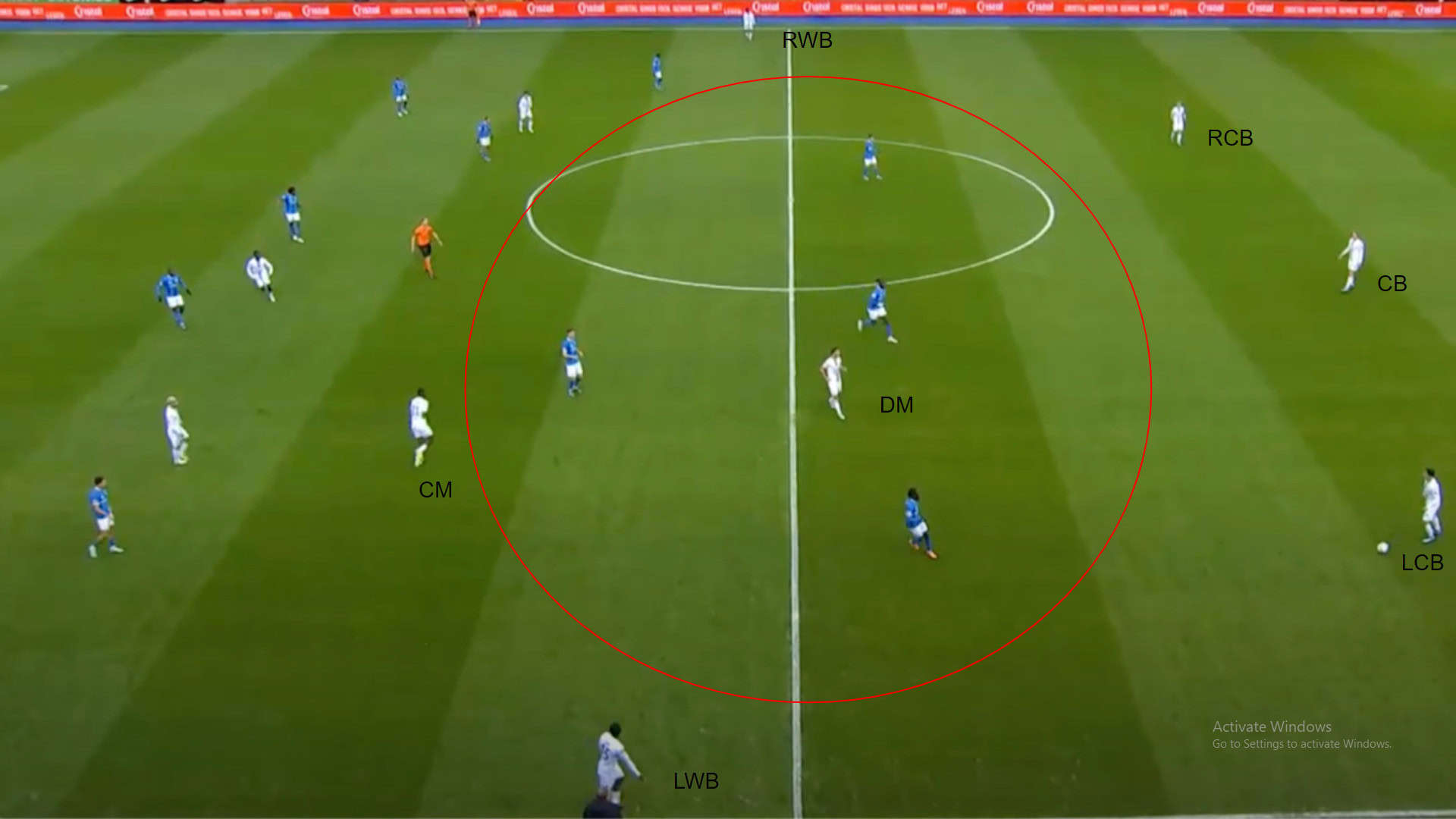
Above, we see an example from García’s first game against Genk.
He opted to use a 5-3-1-1 system, with the wingbacks spreading the pitch and providing width for vertical passing options.
The central midfielders also push higher up here as a ploy to receive the ball in advanced positions on the pitch where they can move directly towards goal.
However, it didn’t work initially as desired.
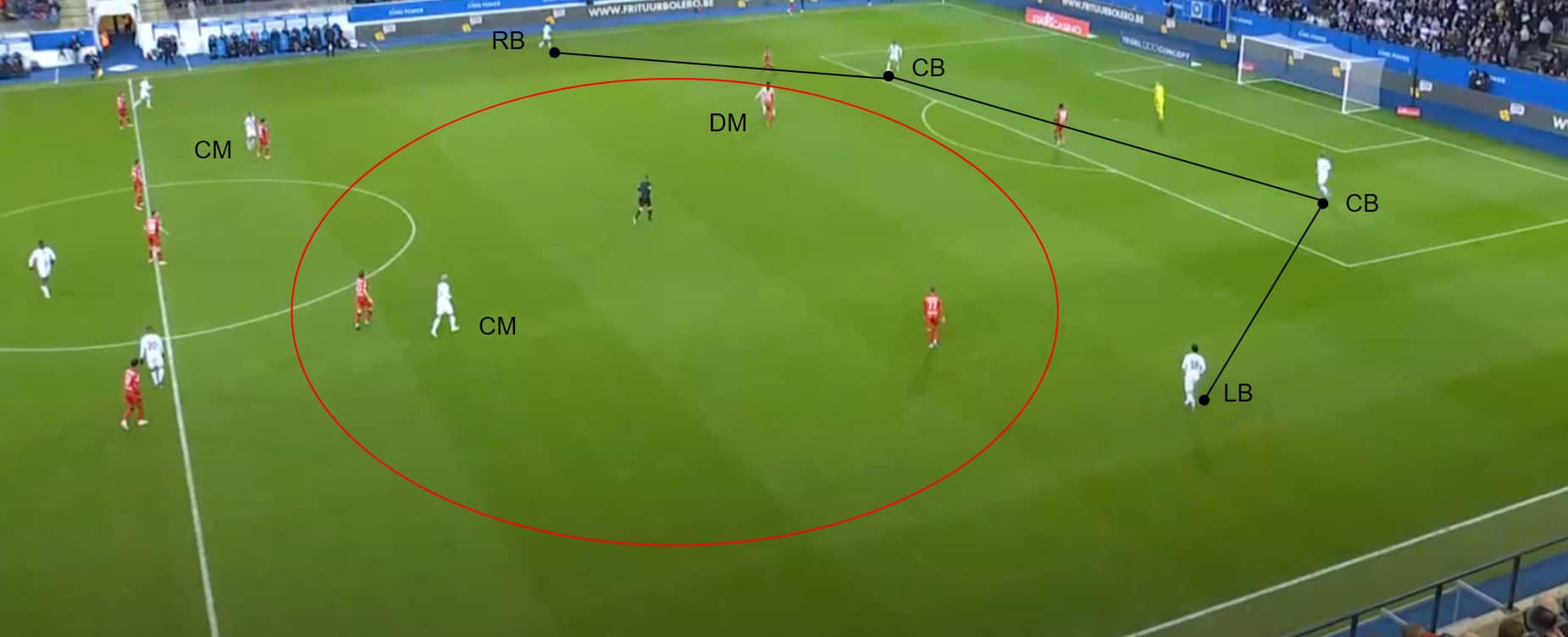
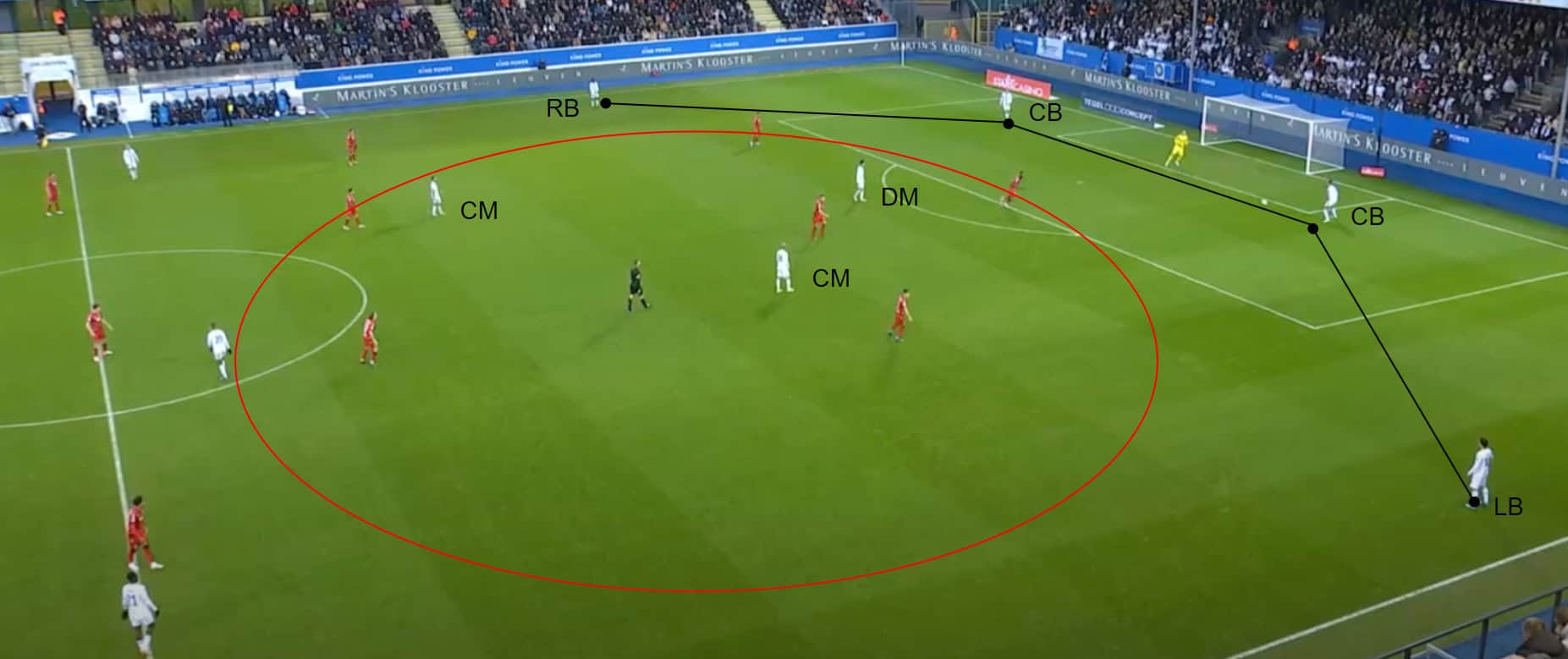
In the two examples above, in his second game against Club Brugge, García altered the shape to play a back four so he could include an extra forward in attack to support Nathaniel Opoku up front.
Just as we saw in the example against Genk, this did not work because Leuven could not establish control of the centre of the pitch with the full-backs playing so wide.
The central midfielders pushing higher up early in the build-up phase.
Leuven’s full-backs at the time were traditional in that they stayed wide at all times, in both offensive and defensive phases.
However, this led to a predictable approach to the team’s collective offensive strategy and put a lot of pressure on the forward players to conjure up the goods, which they managed well but didn’t realize the full potential of what García wanted from his team.
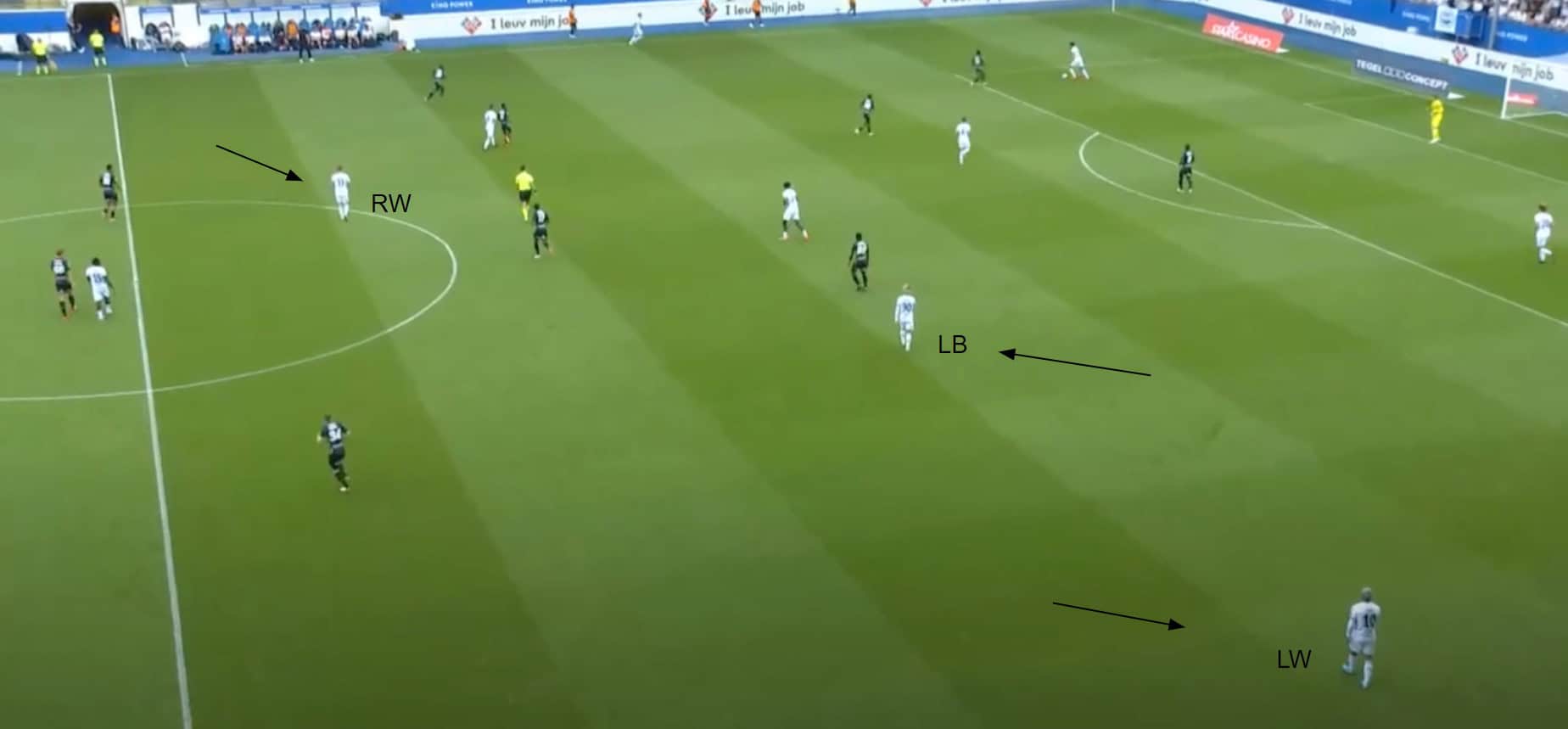
Fast forward nine months later, and the team’s structure looks different now, with García having a few transfer windows and a pre-season to shift players in and out and mould the team more into his vision.
In the above example against Cercle Brugge, Akimoto is seen taking up a far more inverted position from left-back to provide support in possession during the build-up phase.
In contrast, Maziz is seen coming deeper into the left half-space to be the option on the wide left instead.
This change helped Leuven establish more midfield control when on the ball and allowed their plays out of the back to be more connected.
Maziz’s role as an inverted winger here was a good balance to the offence, as he had proven more than capable of receiving the ball from deep and carrying it forward on the run.
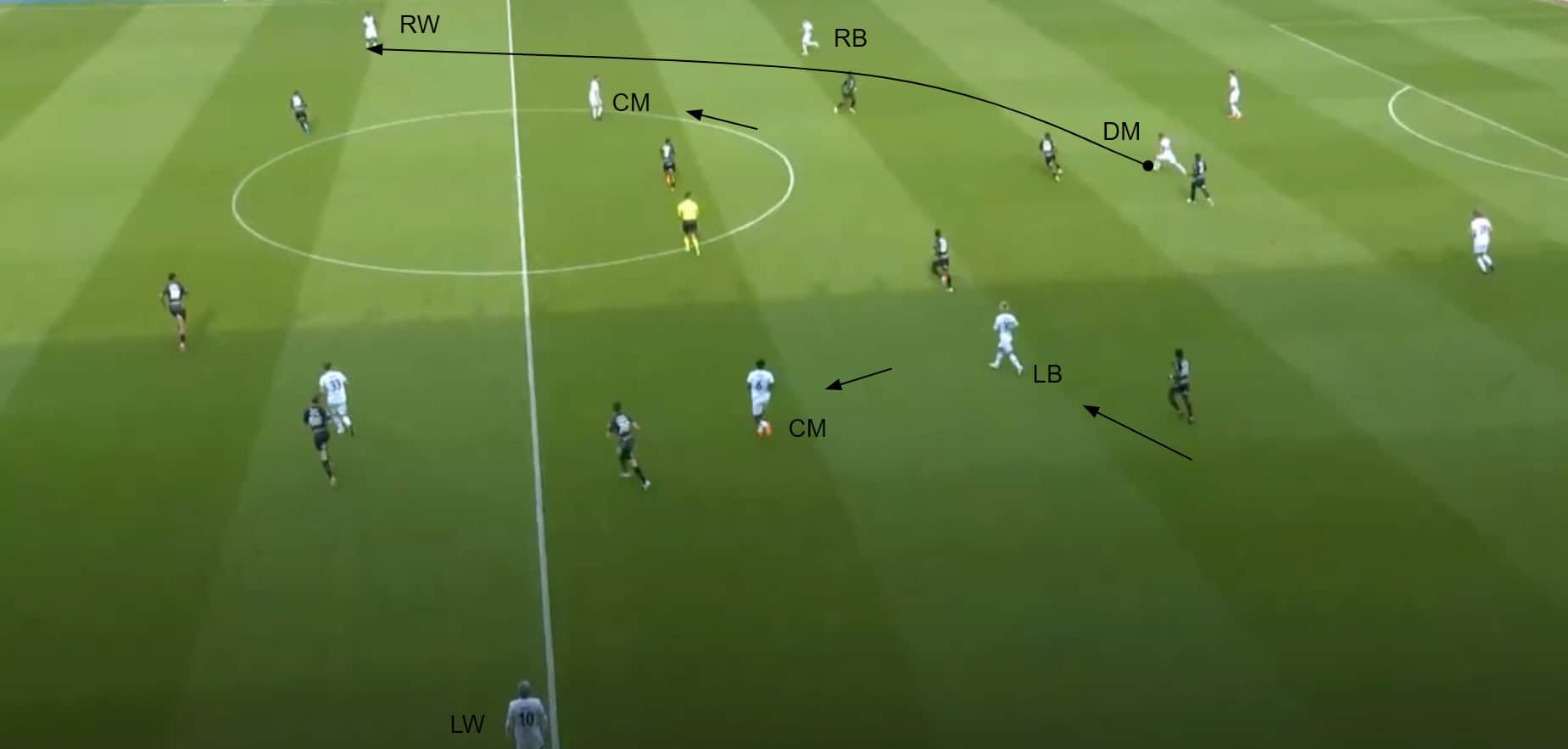
Here, we see the benefits of overloading on the left, with the pacy Konan N’Dri isolated 1v1 on the opposite side, ready to receive when the ball gets switched over to the underloaded side, as it did here.
This is a great example of the verticality that García likes to utilize in his attacking philosophy, with an element of the Barcelona influence in overloading one side and attacking the space on the other with excellent efficiency.
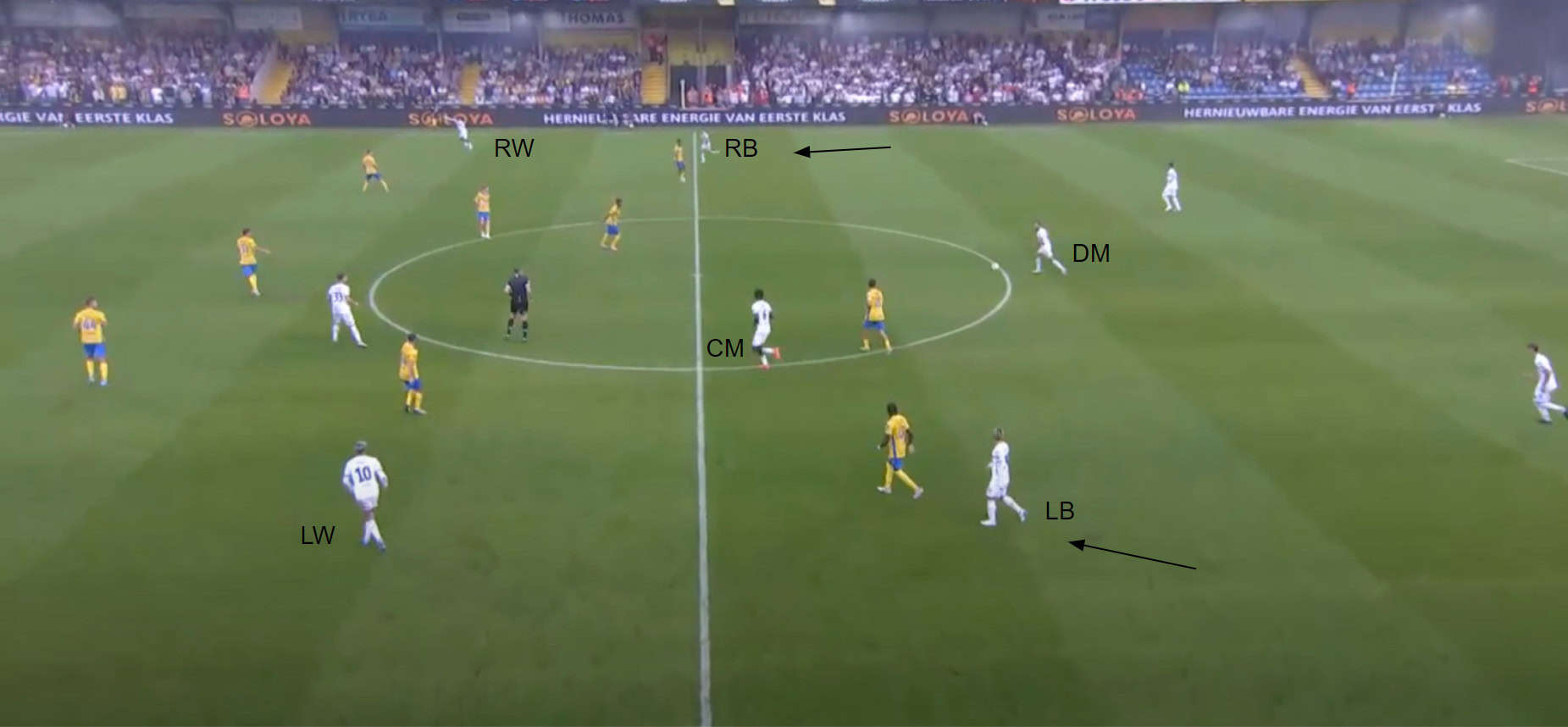
In the last game against Westerlo, we saw both full-backs take up more central roles in the build-up phase, with both Gil and Akimoto taking more inverted starting positions as the team progressed its play from the back.
The central midfielders were thus able to push up better to provide those vertical outlets in the attacking half. Everything was well connected and operating much smoother than in the early stages of the García era.
Óscar García Defensive Formation
Defensively, as is par for the course for an offensive-minded team, Leuven like to be proactive in their defence rather than reactive and letting the game come to them.
Defending from the front is essential, which includes players on the nearest side of the ball pushing up to win possession back for the team.
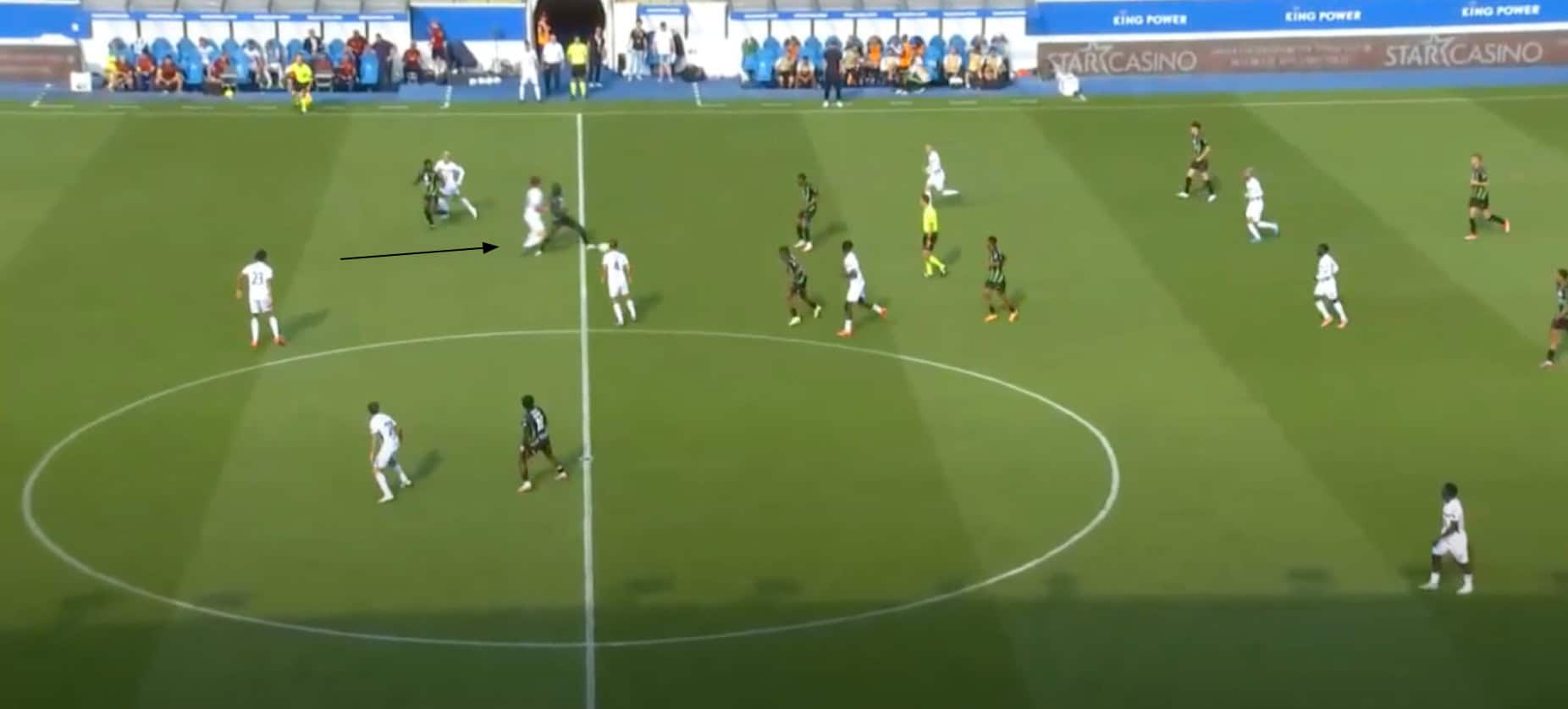
This includes the centre-backs, as we can see above, with Ewoud Pletinckx leading the charge by stepping out of the back four to try and force the ball off his opposite number.
In García’s teams, the centre-backs aren’t just there to challenge for aerial duels or to play a role in his preferred vertical approach; they’re also there to try to help win the ball back and make their presence felt.
Particularly in areas where there is a danger to avert and risks need to be taken, which they are more than willing to do.
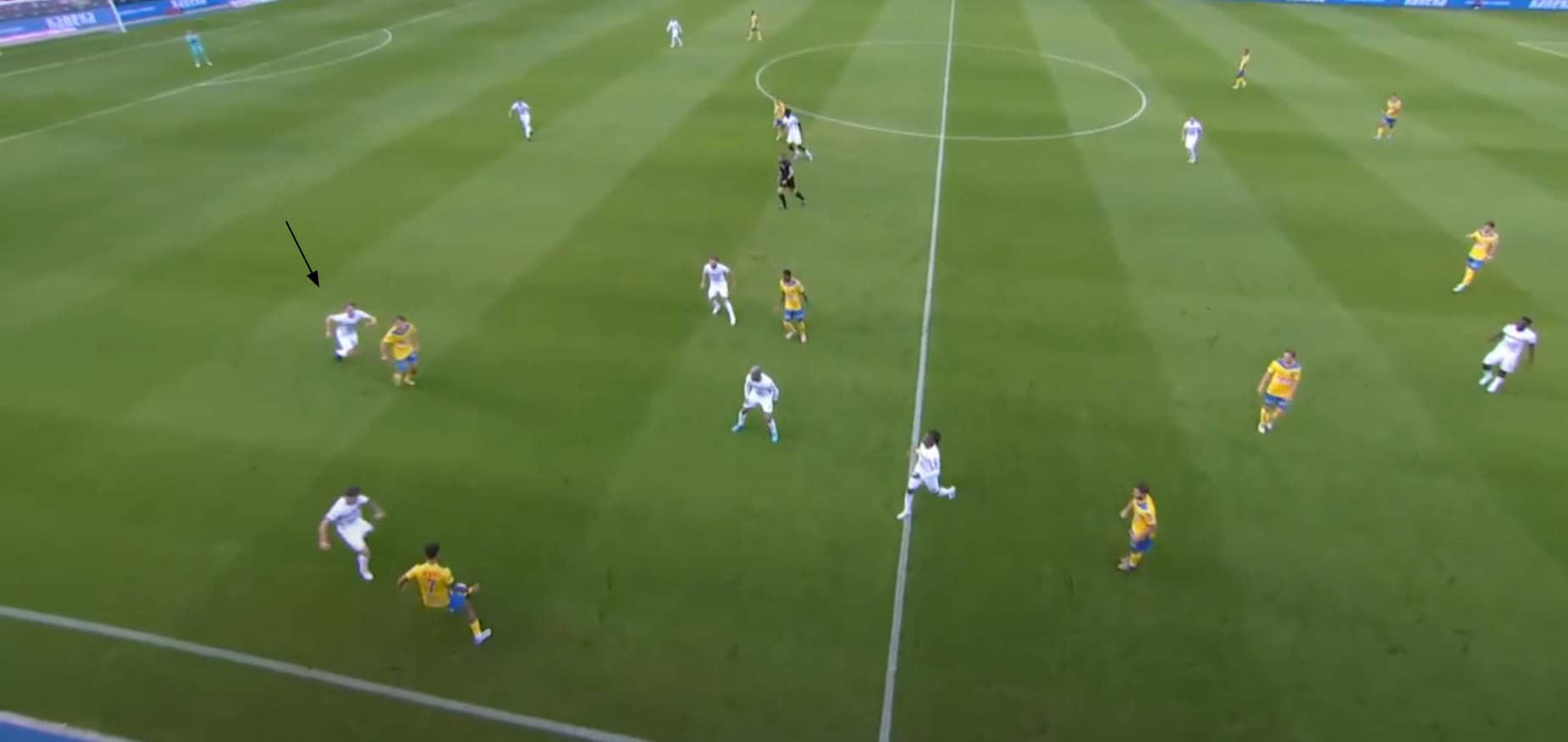
Another example came in the last game.
Westerlo were looking to combine from a wide position, with the striker coming deep to receive, but Pletinckx rushed out to force the forward into a quick decision without the room to turn towards goal.
It’s a case of trying to put out fires before they start, and that’s the role Pletinckx, in particular, plays in this team.
Unfortunately, Pletinckx suffered a broken fibula in this last encounter against Westerlo, resulting from an unfortunate injury from a challenge from behind while defending a cross in the late stages of the first half.
As the de facto leader of the defence with his proactive approach, as highlighted above, it will be interesting to see how García and Leuven will adjust to his absence in the coming months.
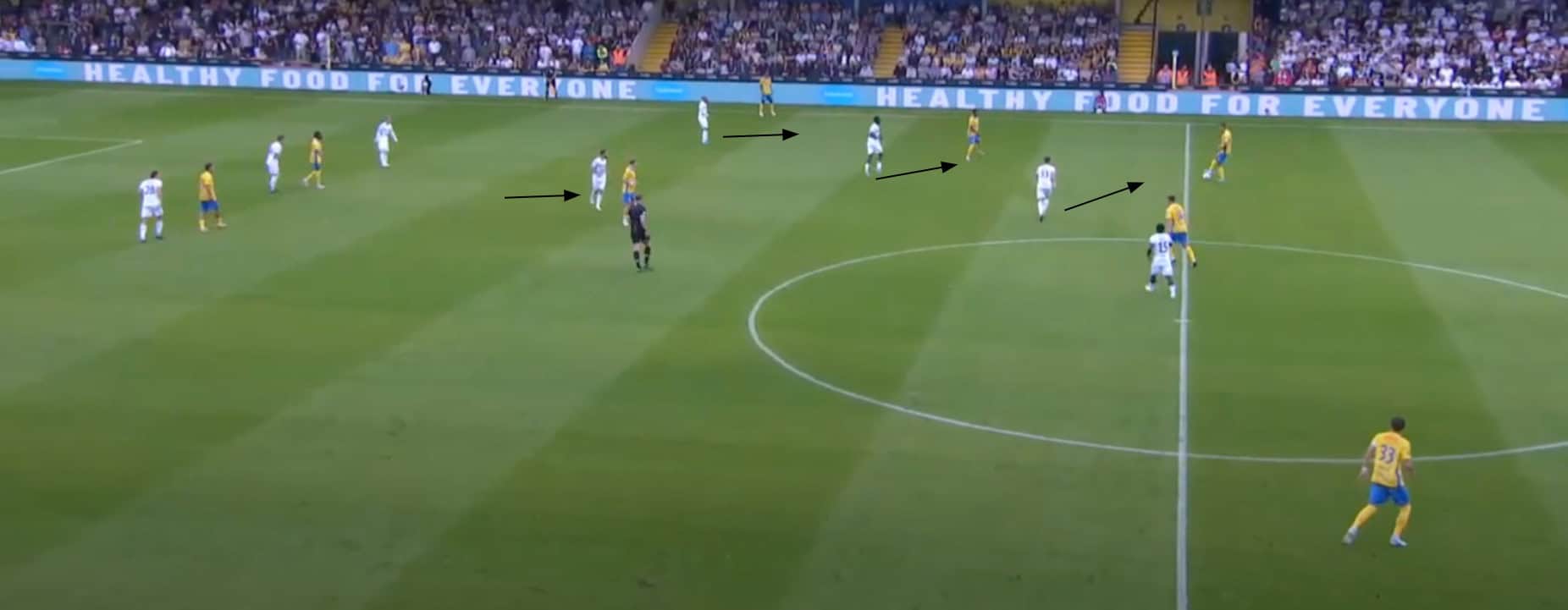
Pressing from the front is obviously paramount for García’s side, as is displayed above.
Whilst the defenders do take a proactive approach in this regard, it’s only when the ball gets past their front players are their efforts even activated.
Here, we see a play progressing into their half, where we see Banzuzi, Maertens, and Maziz pushing up to cut out the space for their players to move into and force Westerlo into making a play rather than getting time on the ball to do so.
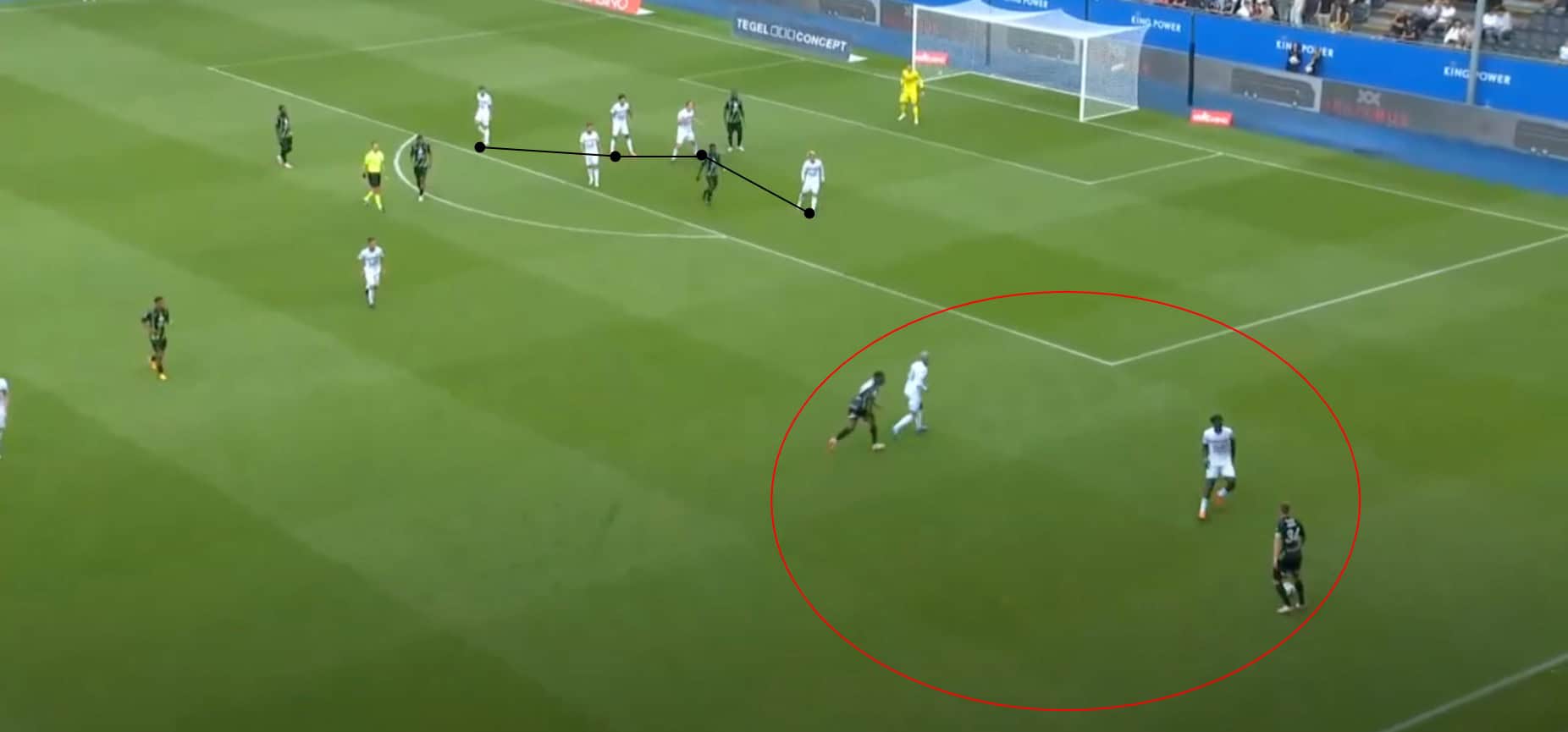
Another important aspect in their defending, particularly this season, is in the role their wide midfield and forward players in their new-look 4-3-2-1 take up on the other side of the ball.
Above, we see Akimoto tucking in to form a narrow back four alongside the rest of the defensive line while Banzuzi and Maziz defend the left flank together instead.
This allows them to defend the box in numbers while not losing control of the wide areas and coming up into unfancied numerical situations.
This requires players who can put a shift on both sides of the ball, which is what Maziz and Banzuzi do very well. Hence, their invaluable presence in the team and in García’s plans.

Another illustration of the above can be seen here from a different angle, with Gil pushing up to try to win the ball off the wide player and N’Dri tracking back to cover the runner moving into the space behind him.
Leuven does well controlling defensive situations, even in transitions, and the effort of their front players coming back to help out is a big key to that.
Full-Backs Supporting In Attacking Transitions
The other side of the coin to their transitional defence is their offence.
Below, we will explore a couple of examples of how their wide men are just as important on this end of the ball as they are on the defensive side.
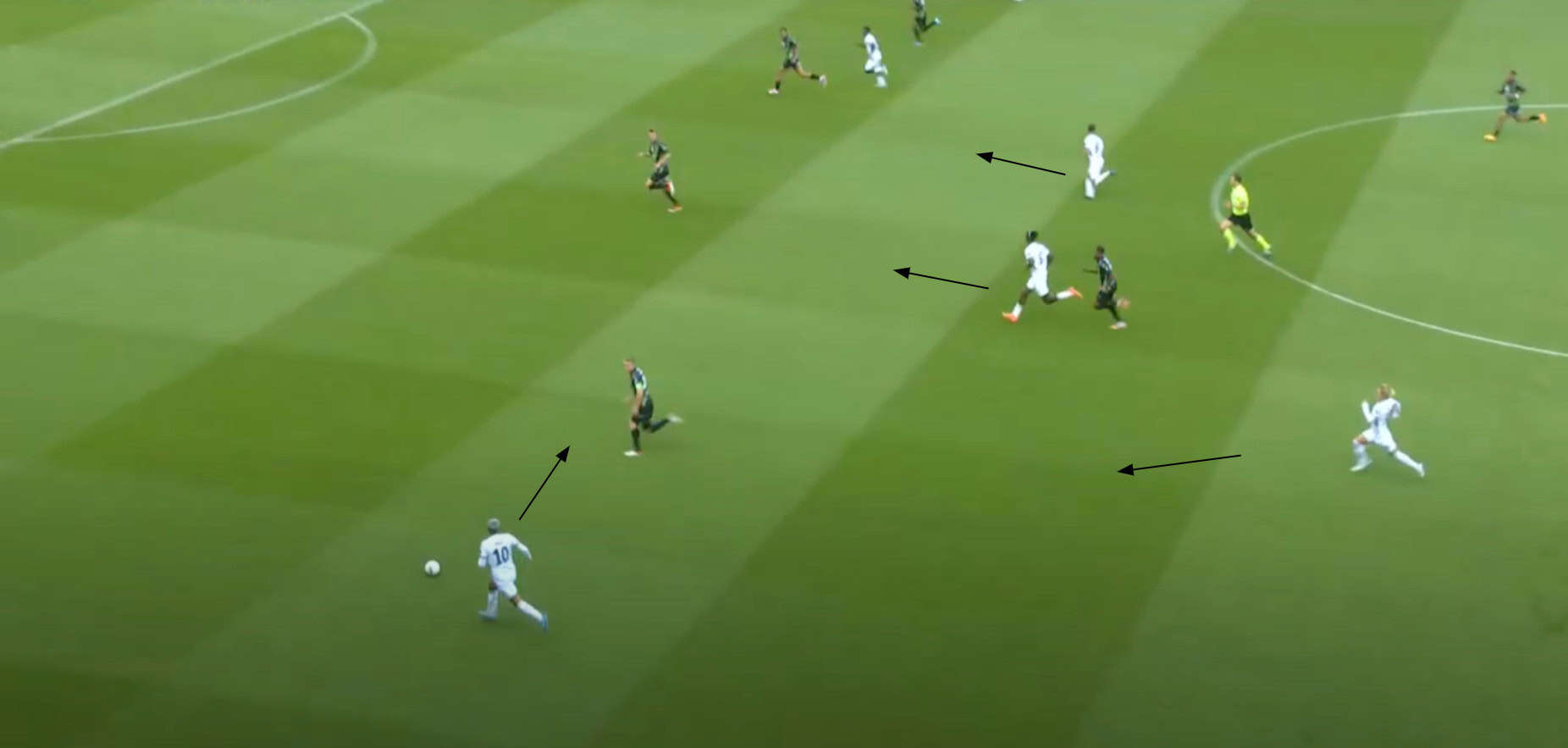
Here, we see an example from a couple of weeks back against Cercle Brugge, where Maziz receives the ball in space on the counter.
Akimoto is seen busting a gut and getting forward on the overlap to support the offence quickly and efficiently.
Maziz notices this and comes inside while Akimoto continues his run on the outside.
Akimoto eventually gets rewarded with a pass into him, but the end product wasn’t quite there.
Still, though, it is an excellent example of just what García wants from his offence, going from back to front with as many players supporting the attack and fast actions to arrive at the goal, the mark of any offensively direct team.
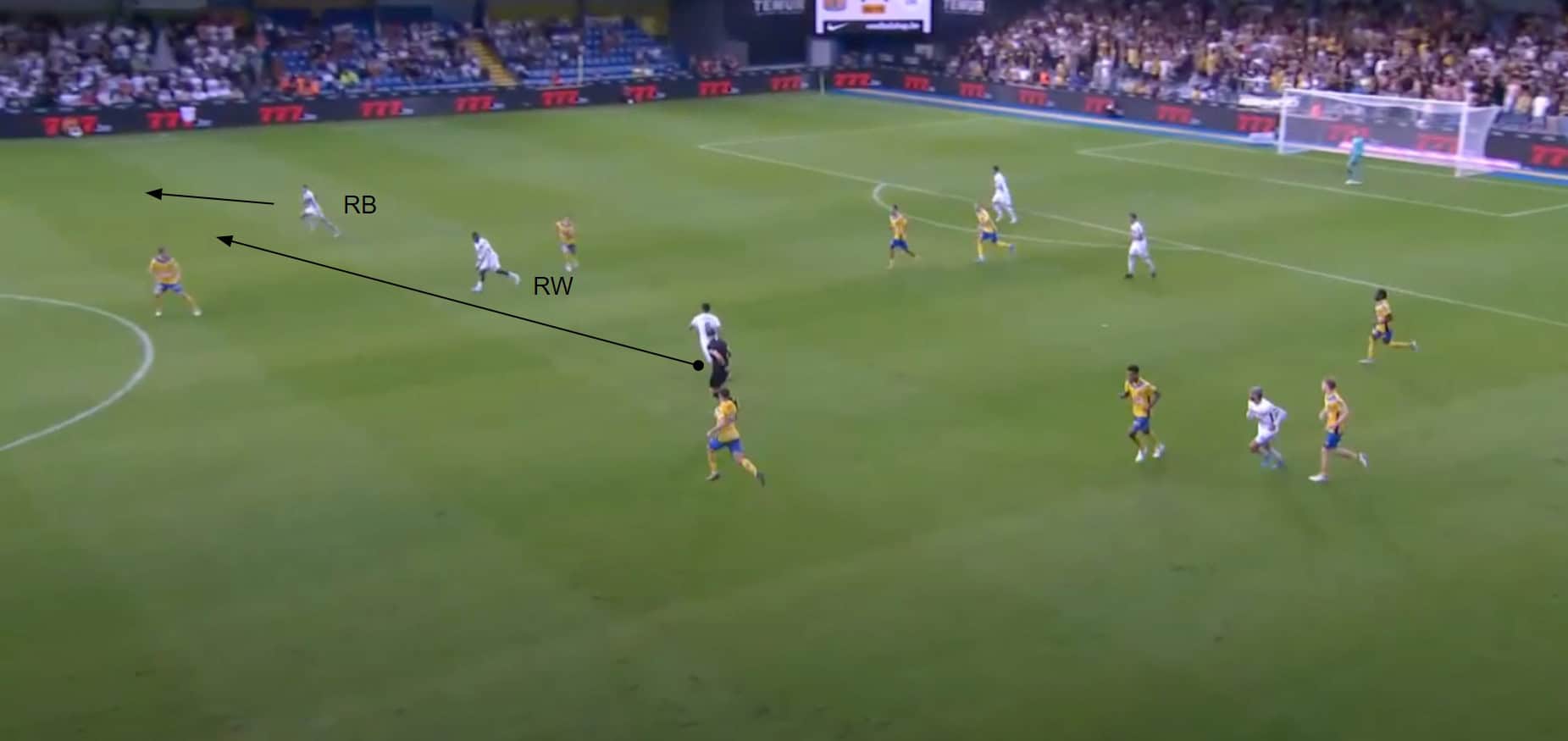
Here, we see a situation where the other fullback, Gil, does the same as we saw Akimoto do earlier.
Leuven win possession back deep in their own half, and we can see Gil sprinting into the space left behind by Westerlo to receive the ball in an advanced position.
He noticed the space even quicker than the winger in front of him, N’Dri, and acted quickly to exploit it, eventually resulting in a shooting attempt for the Spaniard.
Whilst Leuven still remains a low-scoring side, averaging about a goal per game, it seems clear that the team is heading in the right direction with the changes made by García and the numbers are bound to improve as the season wears on.
They have been wasteful in some situations with their lacklustre finishing.
Still, the important thing is they’re putting themselves in better and more positions to score, and it’s only a matter of time before the goals start falling in regularly.
Conclusion
So, as we can see above, there has been an evolution of sorts in García’s time at Leuven over the past nine months.
Having the time to work with the players that he took over and adding his own to get the team set up just how he wants it has seen noticeable progress as the side have improved from the early stages of last season.
They sit in ninth position in the table as one of only two unbeaten sides left in the league after five rounds, the other being league leaders Anderlecht.
All that’s needed now is to turn those draws into wins with the better end product in the final third, and maybe, just maybe, García’s Leuven could go places this season.

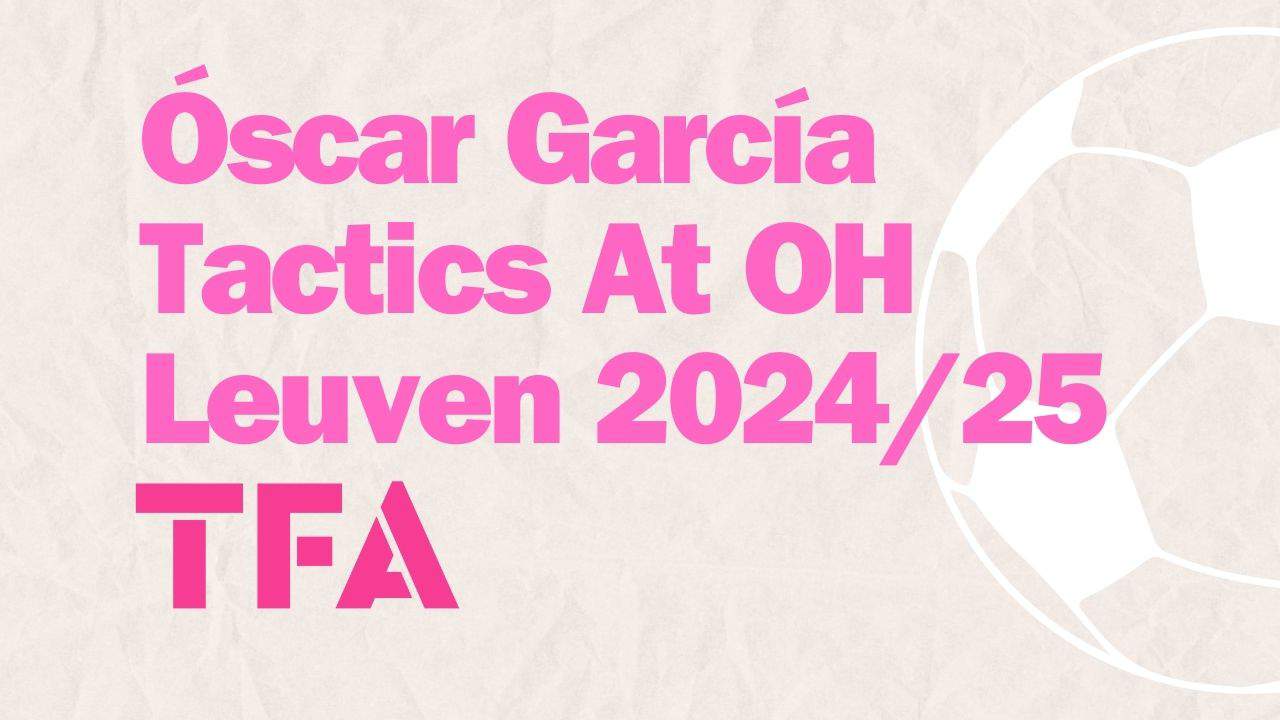




Comments